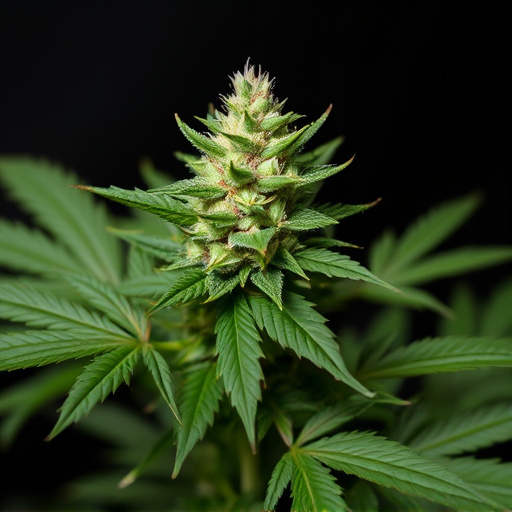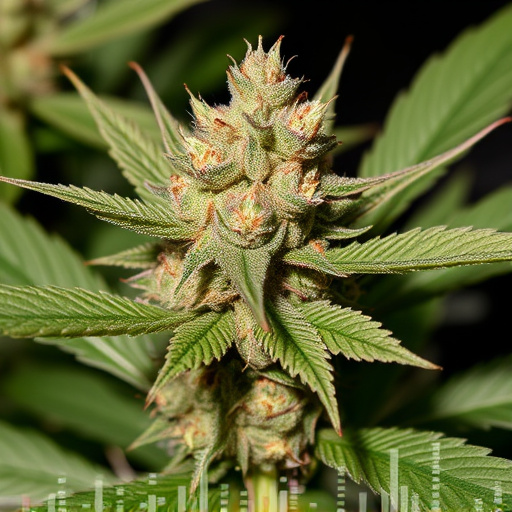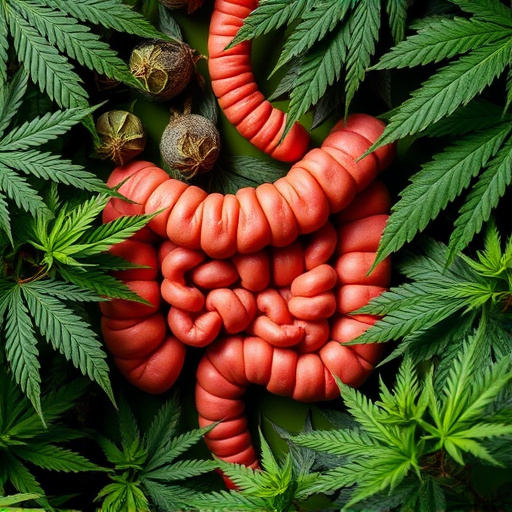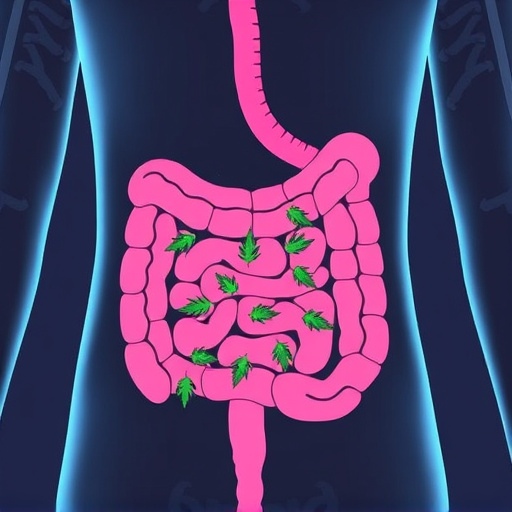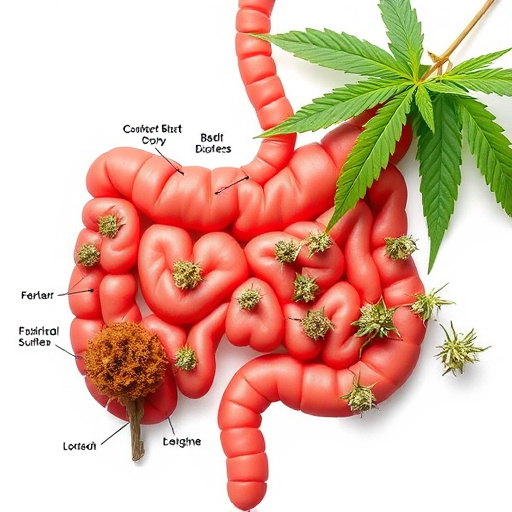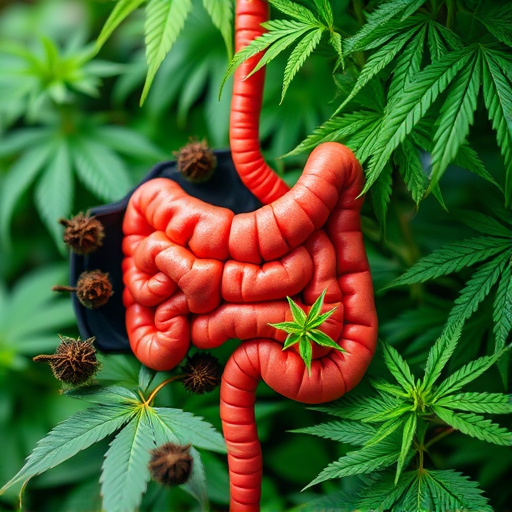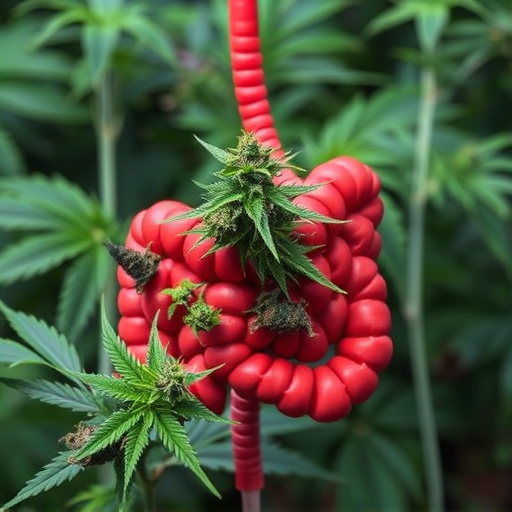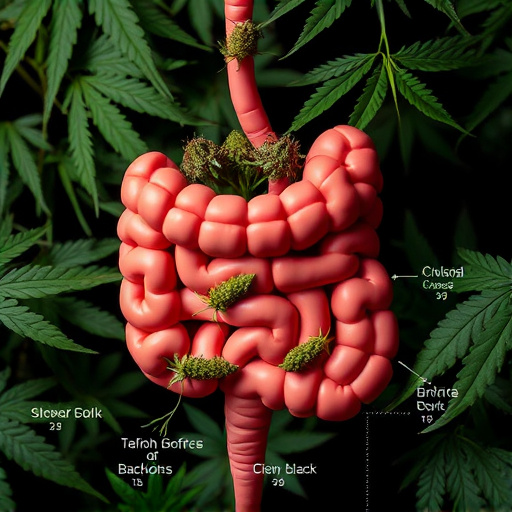Cannabis offers promising symptom relief for individuals with Crohn's Disease through specific strains containing THC and CBD. Patients can choose between high-CBD strains for anti-inflammatory properties or THC-rich strains for intense pain relief, working closely with medical professionals to find the ideal combination. The "munchies," a common effect of cannabis consumption, are linked to interactions within the endocannabinoid system, which regulates appetite. High-THC strains stimulate this system, increasing hunger, benefitting those with Crohn's facing appetite suppression. However, ongoing studies explore potential long-term effects on eating behaviors and metabolic health. As cannabis integration into medical practices grows, understanding these complexities is crucial for developing evidence-based guidelines.
“Unraveling the science behind the ‘munchies’ phenomenon, this article explores how cannabis interacts with our bodies, particularly in managing Crohn’s Disease. We delve into the impact of various cannabis strains on appetite and inflammation, uncovering the complex mechanisms at play. By understanding the role of cannabis in treating this condition, we gain insights into future implications for patients, offering a glimpse into how scientific advancements can enhance quality of life for those affected by Crohn’s.”
- Understanding the Role of Cannabis in Managing Crohn's Disease
- The Impact of Different Cannabis Strains on Appetite and Inflammation
- Decoding the 'Munchies' Effect: Scientific Insights and Future Implications
Understanding the Role of Cannabis in Managing Crohn's Disease

Cannabis has emerged as a promising treatment option for individuals managing Crohn’s Disease, a chronic inflammatory condition affecting the digestive tract. Research suggests that specific cannabis strains can significantly alleviate symptoms associated with this debilitating illness. These strains contain compounds like THC and CBD, which interact with the endocannabinoid system in the body, playing a crucial role in reducing inflammation and pain.
When it comes to choosing cannabis strains for Crohn’s Disease, different options cater to varied needs. Some high-CBD strains are preferred for their anti-inflammatory properties without inducing psychotropic effects. Others, rich in THC, can provide more intense pain relief but may have a stronger mental impact. Patients often work closely with medical professionals and dispensaries to find the ideal strain or combination that best manages their symptoms, ensuring they receive the benefits of cannabis while maintaining quality of life.
The Impact of Different Cannabis Strains on Appetite and Inflammation

Cannabis has long been recognized for its ability to stimulate appetite, a phenomenon often referred to as the “munchies.” This effect is particularly notable among various cannabis strains, each with unique chemical profiles that can significantly impact user experiences and health outcomes. The interaction between these strains and the body’s endocannabinoid system plays a crucial role in regulating hunger and managing inflammation.
For individuals suffering from conditions like Crohn’s disease, a chronic inflammatory bowel disorder (IBD), cannabis strains high in THC (tetrahydrocannabinol) have shown promise in reducing inflammation and alleviating symptoms. THC binds to the CB1 receptors in the brain and CB2 receptors in the immune system, modulating appetite and potentially soothing intestinal inflammation. Conversely, CBD (cannabidiol) strains, which contain minimal THC, can offer anti-inflammatory benefits without the psychoactive effects. This diversity in cannabis strains allows for personalized medicine, catering to specific needs and preferences while managing conditions like Crohn’s disease effectively.
Decoding the 'Munchies' Effect: Scientific Insights and Future Implications

The “munchies,” a term often associated with cannabis consumption, refers to the intense hunger that follows use and is thought to be linked to both physiological and psychological factors. Scientifically, this phenomenon can be attributed to cannabinoid interactions within the endocannabinoid system (ECS), which plays a key role in regulating appetite, memory, and mood. Research suggests that cannabis strains high in THC stimulate the ECS, leading to increased hunger. This effect is particularly notable for individuals with medical conditions like Crohn’s disease, where appetite suppression is a common challenge.
Beyond the immediate effects, ongoing studies explore the potential long-term implications of cannabis consumption on eating behaviors and metabolic health. Some research hints at cannabis’ dual nature: while it may stimulate appetite, chronic use could also influence food preferences and contribute to obesity or other diet-related disorders. Understanding these complexities is crucial for developing evidence-based guidelines, especially as cannabis becomes increasingly legalized and integrated into medical practices, particularly for managing conditions like Crohn’s disease.
The science behind the “munchies” phenomenon reveals a complex interplay between cannabis strains, appetite, and inflammation. Specifically, certain cannabis compounds interact with our endocannabinoid system, known to regulate hunger and pain. For individuals with Crohn’s disease, this interaction offers promising therapeutic potential. The impact of different cannabis strains on both appetite stimulation and anti-inflammatory properties provides a novel approach to managing symptoms, suggesting future research and applications that could greatly improve quality of life for those affected by this condition.





